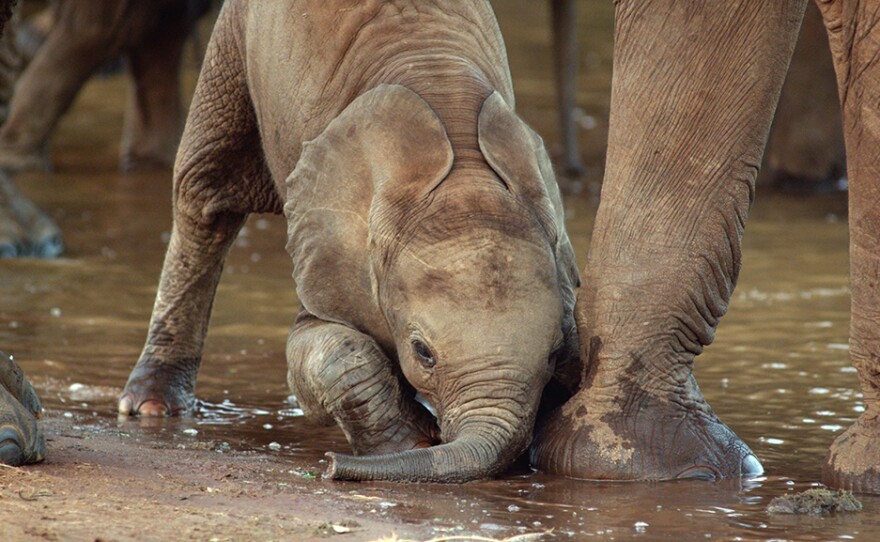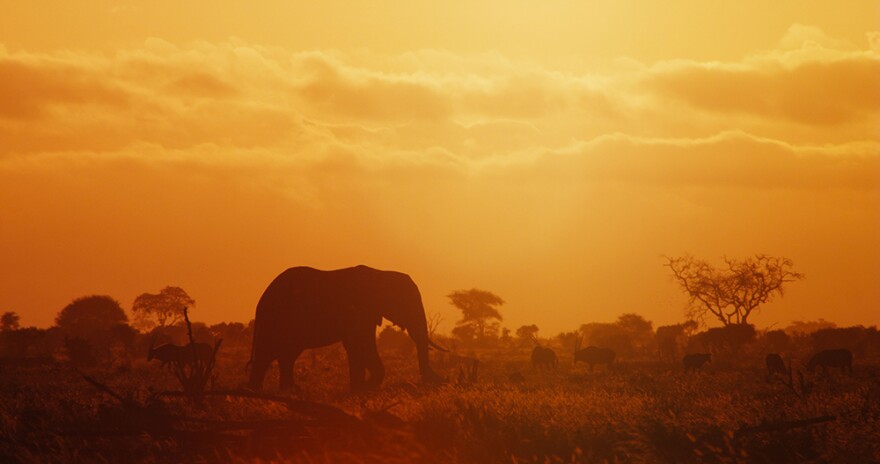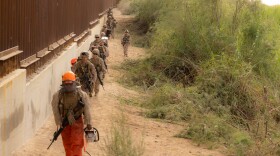Wednesday, March 19, 2025 at 8 p.m. on KPBS TV / Stream now with KPBS Passport + Encore Sunday, March 23 at 8 p.m. on KPBS 2
In arid regions across southern Kenya, the waterhole, created by elephants and termites, is central to life. It is where animals visit to drink and where some creatures are born and die. Every visit is charged with tension; a waterhole is the perfect place for predators to wait in ambush. That is the traditional view, but there is an entire community of creatures that call the waterhole home, many of whom live at an elephant’s toenail height such as frogs, dung beetles and chameleons.
NATURE "The Elephant and the Termite" tells the remarkable story of the relationship between Africa’s largest and smallest and the unique wildlife community they support. Peabody Award-winning filmmakers Mark Deeble and Vicky Stone (NATURE "The Queen of Trees") and their small, dedicated team spent two years of their lives camped out at a waterhole in Kenya to record life at Africa’s great wildlife meeting place.
Buzzworthy Moments:
- Waterholes, the oases of life in Kenya’s Tsavo East National Park, rely on elephants and termites for their creation. Termite mounds contain rich nutrients that elephants love. Their constant excavation becomes a hollow in the landscape that is then filled with water when the rains come. Each time a family of elephants visits, they wallow in the mud and the hole grows even bigger.
- Among the first animals to arrive at the waterhole are killifish, whose tiny eggs are carried by the elephant’s feet. Lungfish, who spend each dry season asleep underground, lie in wait for the waters to arrive each season before emerging.
- Ten million red-billed quelea rest at the waterhole during their migration. These small birds are prey for larger birds, including steppe eagles. One quelea escapes the jaws of a terrapin only to be spotted by an eagle and must hide in a log before making a quick escape.
- Insects are plentiful at the waterhole and provide a much-needed meal for other predators. Chameleons snatch up butterflies with their long tongues. Bat-eared foxes catch hapless dung beetles who escape with their dung balls. Bullfrogs learn the hard way the correct way to eat crunchy termites – not face first!
Featured Creatures:
- Elephant
- Termite
- Yellow-billed stork
- Killifish
- Lungfish
- Yellow baboon
- Dung beetle
- Bat-eared fox
- Grass yellow butterfly
- Slender Chameleon
- Bullfrog
- Red-billed quelea
- Cheetah
- Fishing spider
- Terrapin
- Steppe eagle
- Thumbelina frog
Watch On Your Schedule: This film is available to stream with KPBS Passport, a benefit for members supporting KPBS at $60 or more yearly, using your computer, smartphone, tablet, Roku, AppleTV, Amazon Fire or Chromecast. Learn how to activate your benefit now.
Join The Conversation: NATURE is on Facebook, Instagram, @PBSNature on X #NaturePBS
Credits: A film by Mark Deeble and Victoria Stone. A Deeble, Stone & Oliff production with The WNET Group in co-production with Terra Mater Factual Studios in association with NHK. The film is directed by Mark Deeble and Victoria Stone. Etienne Oliff is assistant director and Victoria Stone is producer. Written by Mark Deeble and narrated by Noma Dumezweni. NATURE is a production of The WNET Group for PBS. For NATURE: Fred Kaufman is executive producer, Bill Murphy is series producer and Janet Hess is series editor.












